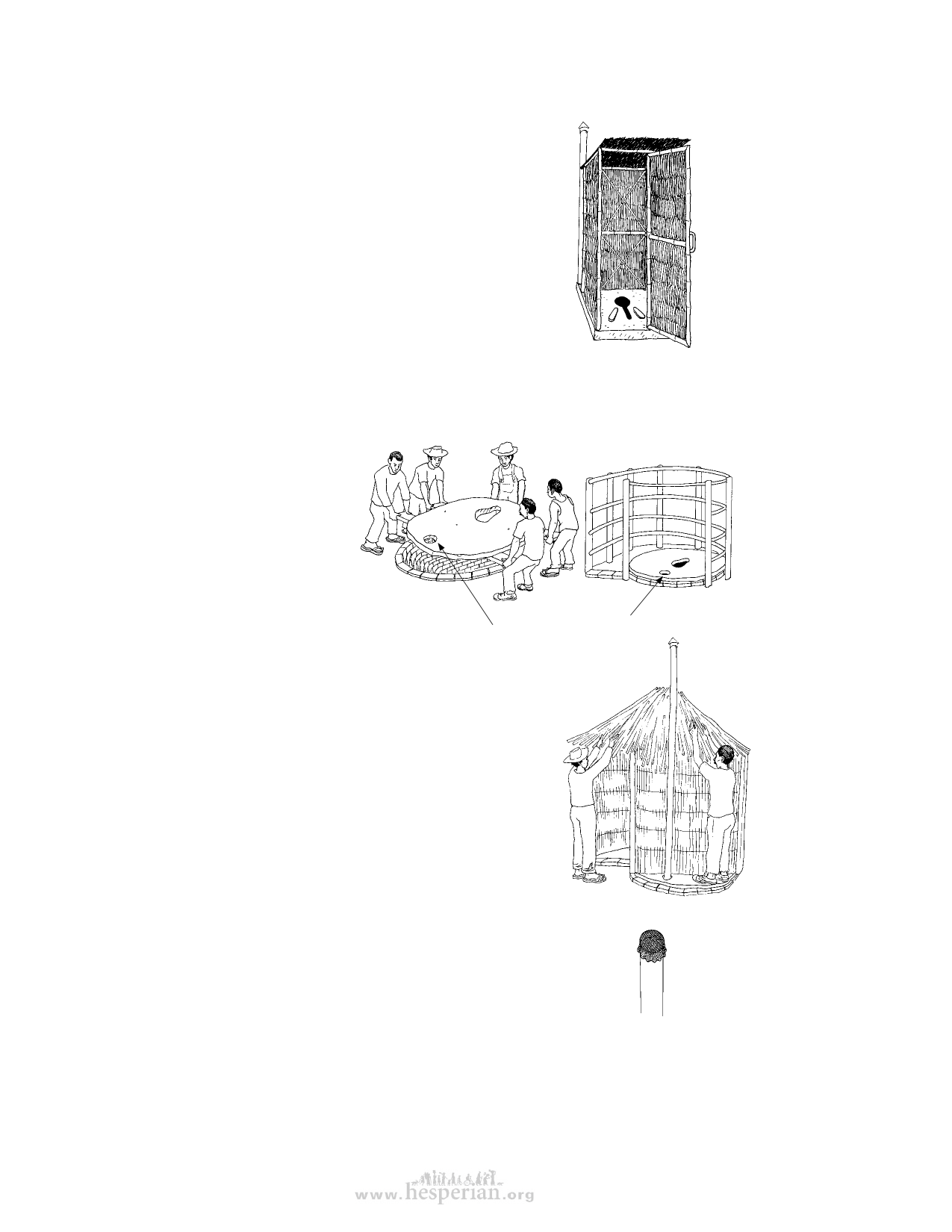
32 Sanitation and Cleanliness for a Healthy Environment
Ventilated improved pit toilets (VIP)
The VIP toilet is a kind of closed pit toilet that reduces
smells and flies.
How the VIP works
Wind blows across the top of the vent pipe and carries
away smells. The shelter keeps the toilet dark so the
flies in the pit will go towards the light at the top of the
pipe, get trapped by the wire screen, and die.
To make the VIP toilet
1. Dig the pit 2 meters deep and 1 ½ meters wide. Line the top with bricks or a
concrete ring beam sized to fit the pit (see page 31). If the shelter will be very
heavy (made of brick, concrete or heavy wood), line the whole pit, except the
bottom. Leave gaps in the brick work to let liquids out.
2. Make a platform.
See the guidelines
on page 30, but
make the platform
a little bigger: 1 ½
meters by 1 meter,
with 2 holes in it. The
second hole, about 15
centimeters wide near
an edge of the platform,
is for the vent pipe.
3. Build a shelter over the pit and platform.
Make the vent pipe hole
the same size around as
the vent pipe.
4. Fit a vent pipe at least 15 centimeters wide
over the smaller hole. Paint the vent black
to absorb heat and improve ventilation.
Cover the top of the vent pipe with a
mosquito screen (aluminum or stainless
steel last longest) and a ‘hat’ to protect
from rain. Make the vent pipe rise at least
50 centimeters above the roof so the wind
can draw out odors.
To use and maintain a VIP toilet
Keep the hole covered when not in use. Keep
the shelter semi-dark inside. Keep the toilet
clean and wash the platform often.
VIP toilets can have these problems
If the shelter is not dark enough, or if the hole
is left uncovered, flies will not enter the pipe.
The vent pipe may get blocked by spider webs.
If the shelter has no roof, or if the screen breaks or
comes off the vent pipe, there is little fly control.
If the wire screen breaks
or comes off the pipe,
replace it at once.